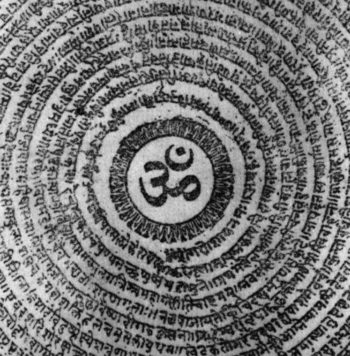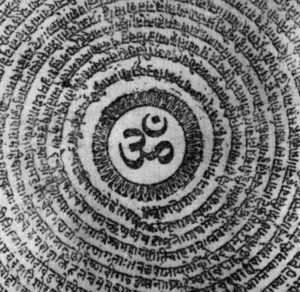Good Vibrations

What if the vibration from your own voice had the power to heal you? Yes, I know… it sounds a little science fiction-ish, but the truth of the matter is, there’s some pretty substantial and ever-mounting evidence pointing towards the power contained in our own voice.
 If you’re anything like I was, you might have a slight (or more than slight!) aversion to chanting. I remember taking yoga classes where teachers would begin class with (what seemed like) a very complicated Sanskrit chant, and at the time, sitting there trying to sing along seemed awkward at best, forced and inauthentic at worst. The discomfort and self-consciousness of being with a group, not knowing the words combined with being completely ignorant to any of the reasons why I would want to do this… well I just filed it away under “not for me” and went on with the rest of my practice. Maybe you can relate to this experience, or maybe you’ve never had any experience with chanting, but the idea of it reminds you of being stuck in the religious services you disliked as a child or worse, it conjures up some sort of vague, cult-like feeling.
If you’re anything like I was, you might have a slight (or more than slight!) aversion to chanting. I remember taking yoga classes where teachers would begin class with (what seemed like) a very complicated Sanskrit chant, and at the time, sitting there trying to sing along seemed awkward at best, forced and inauthentic at worst. The discomfort and self-consciousness of being with a group, not knowing the words combined with being completely ignorant to any of the reasons why I would want to do this… well I just filed it away under “not for me” and went on with the rest of my practice. Maybe you can relate to this experience, or maybe you’ve never had any experience with chanting, but the idea of it reminds you of being stuck in the religious services you disliked as a child or worse, it conjures up some sort of vague, cult-like feeling.
I understand. Completely.
But let me tell you what I’ve learned. Singing has a real power to it, and what’s more, there is some pretty compelling science behind not just the prolonged use of your voice, but using mantra in particular. (See link below.)
Coming from one recent scientific angle, new studies indicate that singing in it’s various forms, including mantra and humming (which is another yogic practice called “bhramari”) has been shown to directly stimulate the vagus nerve. The vagus nerve is the longest cranial nerve, directly connecting the brain to all of the major organs in the body… including your gut, heart and lungs. Since the vagus nerve is connected to the vocal chords and muscles of the throat as it descends from the brain, stimulation through singing or humming has been shown to improve the “tone” of the nerve (the nerves internal, biological process) which helps facilitate putting the nervous system into it’s para-sympathetic state… the state of relaxation and ease.
Being in this state of course not only makes us feel better, but has a direct counter-effect on the stress hormones in our body, which when regularly released over a long period of time can have a detrimental, long-term impact on our physical and mental health. Recent studies have shown that stimulating and increasing your vagal ’tone’ has positive effects on conditions such as depression, anxiety, fibromyalgia, addiction, and chronic fatigue, just to name a few.
So ok, science tells us that singing is good us. But let me (and some of the experts) explain why singing mantra is even better…
First off, what exactly is mantra? Often simply referred to as chanting, mantra is actually a sacred science that falls under the yogic umbrella. It is the science of sound and vibration. The Sanskrit word ‘mantra’ comes from the roots man (pronounced “mahn”) meaning mind, and tra meaning tool or instrument. So the definition of mantra is ‘a tool of or for the mind’. This alone tells us that mantra is something more than just singing a lovely tune. Mantras are carefully formulated words, or strings of words, sung in Sanskrit, often with a particular inflection or melody, in order to produce certain effects. In other words, the “tool” of mantra is used to exert a positive effect on the mind.
We now know, undisputedly, that our mind affects our body, but in comparison to yogic science, modern science only understands the tip of this iceberg. But that’s ok… when we are able to see and understand the tip of the iceberg, we have gained an automatic understanding that there IS an entire iceberg. And this is a beautiful start. In the ancient teachings of yoga, our physical body, our mental functioning and our energetic body are the three layers of self that we can actively work with (there are five layers, the other two being a bit more esoteric… our higher intelligence and our bliss.)
Mantra works on aligning the physical, mental and energetic systems of the body, which when properly coordinated keeps us in optimal health, both physically and mentally. Yoga and meditation do this as well, but even the most advanced yogi’s, sages and gurus will tell you that chanting is one of the quickest and easiest ways to achieve this harmony.
Another important piece to mantra is the understanding that Sanskrit is not just an ancient language, but it is considered to be the mother of all languages… a divine language where each word not only has deep, relative meaning, but where each individual sound has it’s own specific vibratory effect. This makes the fashioning of Sanskrit words all the more significant, since the words themselves encompass so much more than just their meaning. This is explained by the deeply-wise but ever-practical world renowned yogi and mystic, Sadhguru:
“Mantras are all vibration and energy. If you were all vibration and energy the effect would be like getting on the super-highway to pure consciousness. But you are a human with thoughts and emotions which are dominant in you. So you need to assign meaning to the words. If I told you the meaning to this mantra was ‘You are a fool, god is a fool, all of this is foolish’ you would not be able to get past that in order to experience the positive energetic effects. Your mind would not allow it and would develop a resistance to it. Sanskrit is such that the meaning of the word is only part of the equation. But the truth is, in mantra the meaning is irrelevant. It is mostly to comfort your human mind. It is the sound and the vibration that is important. That is all.”
Science now understands that the entire universe is nothing but vibration, and that different types of matter are simply different types of molecules vibrating at a particular resonance and speed… including our bodies. We’re just unaware of these movements on a molecular level. But many ancient forms of healing (such as acupuncture) work by affecting the energy system of the body (don’t forget, vibration IS energy) and one the most discernible and recognizable forms of vibration is, you guessed it: Sound. For instance, when you have the volume drastically turned up on your stereo, you not only hear the sound, but you feel it. If it’s loud enough, you can feel it moving and vibrating your insides and raising the hair on your arm. So not only is everything vibrating of it’s own accord, but one vibration can affect another. This is not science fiction… just science. And the ancient science of yoga has known this for thousands of years.
Traditionally, different mantras are used for different effects, since the vibrations of each sound not only acts upon the body in a certain way, but upon the world at large. While that might seem a bit esoteric, it comes from the idea of interconnectivity… that what you think, feel and put out into the world both physically and mentally, has an affect, somewhere out in that world. Have you ever been thinking about someone and awhile later you get a text message from them? Same idea. Your thought goes out into the world and produces an extremely subtle yet very real, vibratory effect.
This ideology is the basis of synchronicity, collective consciousness and also the basis for karma… that every action (thoughts are considered actions) has a reaction, and simply because we cannot see that reaction doesn’t mean it isn’t happening. The power of the mind is something that eastern sciences have well understood for millennia, and that the western world is finally gaining an understanding of. Regardless, even if this idea seems foreign and unapproachable, it’s safe to say that the general calming of the mind (and subsequent body) that is produced by mantra is something everyone can readily experience if they’re willing to give it a try.
So what does all this tell us? According to science, singing is beneficial to your health. According to yogic science, singing mantra is a transformative tool that helps you take control of your wellbeing in both body and mind… and personally, I think in today’s world we need as many tools as possible to keep us both healthy and happy.
Over time, my relationship with chanting mantra has evolved away from it’s place of resistance into one of the most transformative and tangibly beneficial parts of my practice, and as with most everything in the yoga world, I have discovered a deeper understanding of it’s power through my own trial and error. Music in general has always had a strong effect on me and I have always found myself drawn to certain melodies or sounds, and I found this same thing to be true when initially looking to add more mantras to my practice.
There are literally thousands of mantras to choose from, including all of the traditional ones… which every good yogi should know and practice… but beyond that, I feel it’s important to find choices that resonate for you when starting out. As with yoga and meditation, finding appropriate options when you’re just beginning enables you to really enjoy what’s being offered which then allows the gateway to something deeper to open up.
So if you’re thinking about adding mantra chanting to your practice but don’t know where to start, I would suggest simply listening to some and picking out something you like… be it the melody, the sound of the words, or something about it that might be hard to name. Lyric and pronunciation guides are readily available online as well, and there are many simple chants where you only need to learn a handful of words, but which can still be both engaging and transformative.
And of course let’s not forget the most powerful, “mother of all chants” (and the easiest of them all!) – AUM, more commonly known as OM. Then, sit down, close your eyes, sing along and see what happens… I’m willing to bet it will include a whole lot of good vibrations!
~~~~~
Incredibly informative article on The Power of OM


